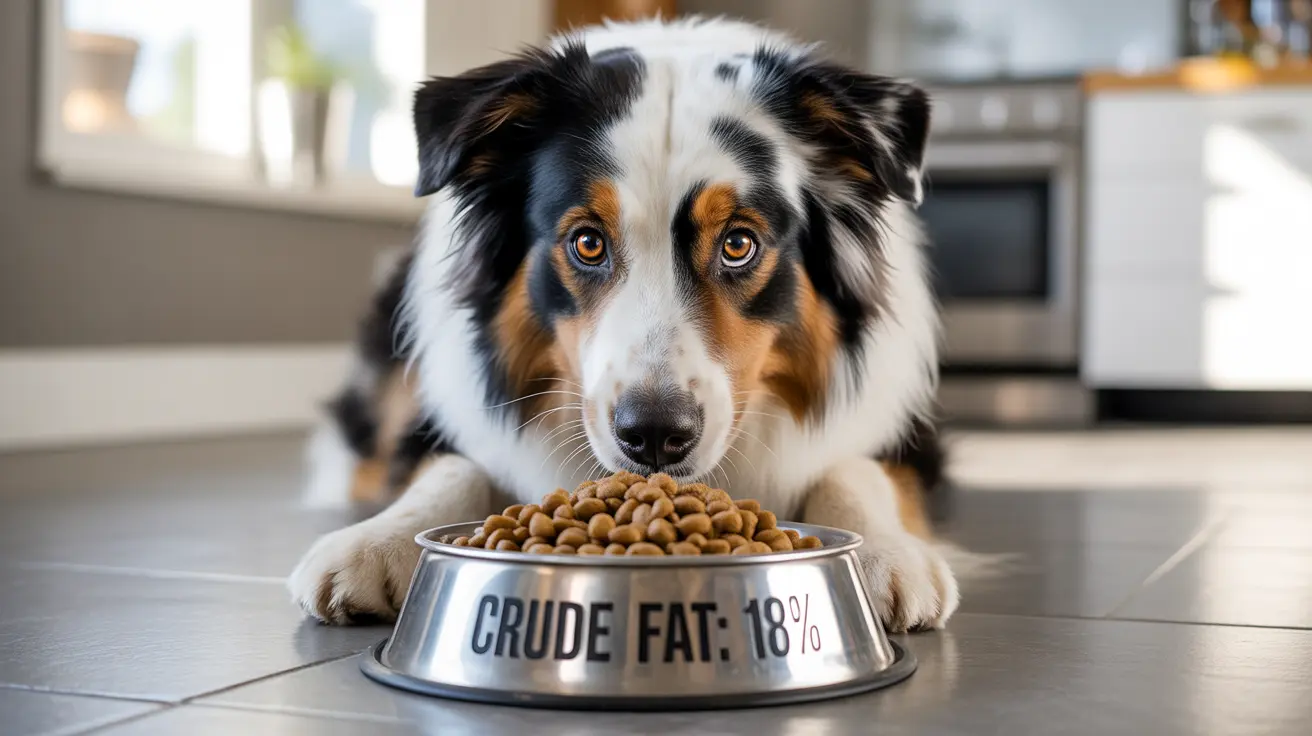What Is Crude Fat in Dog Food and Why Does It Matter?
When examining your dog's food label, you've likely encountered the term "crude fat," but understanding its significance is crucial for your pet's health. Crude fat in dog food represents the total fat content measured before digestion, determined through a specialized laboratory process called ether extraction.
This essential nutrient plays multiple vital roles in your dog's health, from providing concentrated energy to supporting coat health and organ function. Let's explore everything you need to know about crude fat and its importance in your dog's diet.
The Science Behind Crude Fat Measurement
The term "crude" doesn't refer to the quality of fat but rather to the scientific method used to measure it. During analysis, manufacturers use a standardized extraction process that removes all fat-soluble components from the food, providing a percentage that appears on the label.
This measurement includes both animal-based fats (like chicken fat or fish oil) and plant-based oils (such as flaxseed or canola oil), giving pet owners a complete picture of the total fat content in their dog's food.
Essential Functions of Fat in Your Dog's Diet
Fat serves as more than just an energy source for your canine companion. It provides 2.5 times more energy per gram than proteins or carbohydrates, making it an incredibly efficient fuel source for active dogs. Beyond energy, dietary fats are crucial for:
- Absorption of fat-soluble vitamins (A, D, E, and K)
- Maintenance of healthy skin and a glossy coat
- Support of brain function and development
- Protection of internal organs
- Cell membrane structure and function
Recommended Crude Fat Levels for Different Life Stages
The optimal amount of crude fat in your dog's food varies depending on their age, activity level, and health status. According to AAFCO guidelines:
- Adult maintenance: Minimum 5.5% crude fat
- Puppies and reproductive females: Minimum 8.5% crude fat
- Active/working dogs: 15% or higher may be beneficial
- Senior dogs: Requirements vary based on activity level and health
Quality Sources of Crude Fat
The source of fat matters as much as the quantity. High-quality crude fat sources include:
- Named animal fats (chicken fat, salmon oil)
- Fish oils rich in omega-3 fatty acids
- Plant-based oils like flaxseed and coconut oil
- Preserved with natural antioxidants
Signs of Improper Fat Levels
Monitoring your dog for signs of inappropriate fat intake is essential. Watch for:
Too Little Fat:
- Dry, flaky skin
- Dull, brittle coat
- Reduced energy levels
- Poor wound healing
Too Much Fat:
- Weight gain
- Digestive issues
- Potential pancreatitis risk
- Decreased exercise tolerance
Frequently Asked Questions
What does "crude fat" mean on a dog food label and why is it important?
Crude fat on a dog food label indicates the minimum percentage of total fat content, measured through laboratory extraction. It's important because fat provides essential energy, helps absorb vital nutrients, and supports numerous bodily functions in dogs.
How much crude fat should be in my dog's food based on their age and activity level?
Adult dogs need a minimum of 5.5% crude fat, while puppies and reproductive females require at least 8.5%. Active dogs may need 15% or more, while less active or overweight dogs might benefit from lower fat levels around 8-12%.
What are the best sources of crude fat in dog food for promoting healthy skin and coat?
The best sources include named animal fats like chicken fat, fish oils (especially salmon oil), and plant-based oils like flaxseed oil. These provide essential fatty acids that support skin health and coat shine.
What health problems can occur if my dog gets too little or too much crude fat?
Too little fat can lead to dry skin, poor coat condition, and reduced energy levels. Excessive fat intake can cause obesity, pancreatitis, and digestive issues. Balance is key for optimal health.
How can I choose dog food with the right balance of essential fatty acids like omega-3 and omega-6?
Look for dog foods that specify their omega-3 and omega-6 sources and ratios. Choose products with named fat sources and avoid generic terms like "animal fat." Consider foods with fish oil or flaxseed oil for optimal fatty acid balance.
Conclusion
Understanding crude fat in dog food helps you make informed decisions about your pet's nutrition. While ensuring adequate fat levels is crucial, remember that quality and source matter as much as quantity. Always consult with your veterinarian when making significant changes to your dog's diet, especially if they have specific health concerns or dietary requirements.






